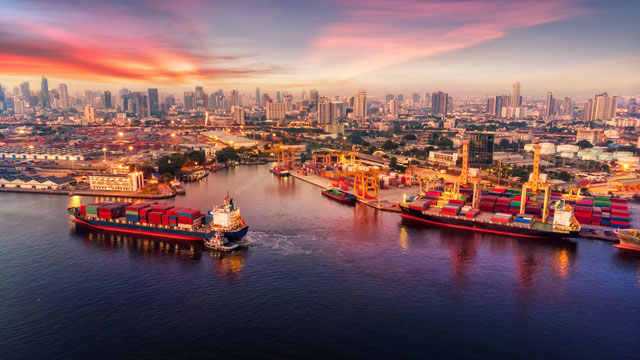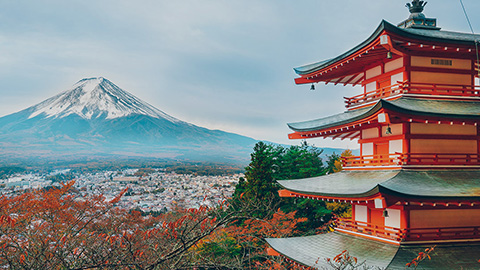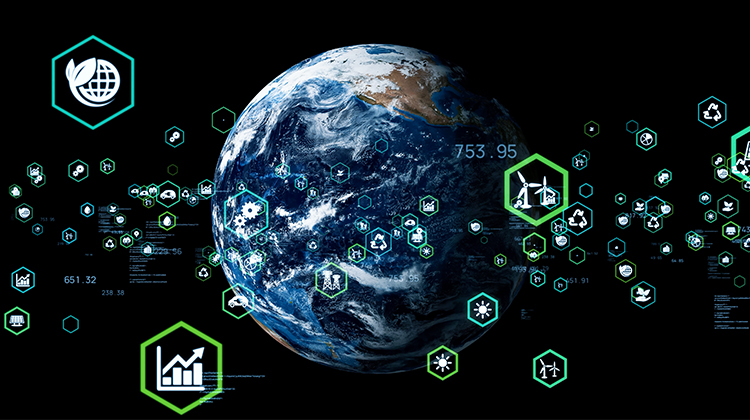May 2023
Japan’s Big Push for Wind Energy is Key to Net Zero Emissions Targets
March 2023

More than a decade ago, Akita Prefecture, in northern Japan, identified new energy as its priority industry and set a goal of expanding wind power generation fivefold in 10 years. That was the starting point of a learning curve for Japan’s nascent offshore wind power industry. Akita Prefecture, together with coastal municipalities, government agencies, fishermen, universities, commercial and industrial organizations, financial institutions, Tohoku Electric Power Company, and others, established a study group and began researching advanced cases in Japan and overseas and selecting suitable sites. Meanwhile, hundreds of kilometers away, in Tokyo, policymakers were considering new, ambitious national energy targets.
In December 2022, the blades of twenty wind turbines standing 150 meters tall offshore in Noshiro Port, Akita Prefecture, slowly started rotating. The following month, 13 turbines began commercial operation within Akita Port, 50km to the south. The Noshiro and Akita Port wind farms are Japan’s first full-scale offshore wind power projects. A total of 33 turbines are capable of generating 140 megawatts (MW) of energy, which translates into a capacity for 130,000 average Japanese households. By the time the offshore wind farms at Akita Port and Noshiro Port were up and running, the Government of Japan had made renewable energy one of the pillars of its economic strategy and energy policy. The country is now counting on such projects to achieve carbon neutrality by 2050 and deliver on its commitments to combat climate change. Starting with the Akita and Noshiro Port projects, offshore wind farms in ports are scheduled to be operational within the next three to four years at Ishikari Bay New Port in Hokkaido, Kitakyushu Port in Fukuoka Prefecture, and Kashima Port in Ibaraki Prefecture.
Aside from Japanese companies, the Akita and Noshiro Port projects looked to the technology and expertise of foreign companies for their structures and engineering. For the turbine technology, they turned to one of the biggest global names in the business: Denmark’s Vestas Wind Systems. Monopiles for the foundation came from Dutch Sif, and the Self Elevated Platform (SEP) vessels and crew from Seajack International of the UK were in charge of installing them.
Japan’s Green Energy Ambitions
Resource-poor Japan relies on fossil fuel imports for nearly 80 per cent of its energy needs. Its energy self-sufficiency ratio, at 12 per cent, is the lowest among the G7 countries. That’s expected to change under Prime Minister Fumio Kishida’s Green Transformation policies. The Government of Japan is now revamping the energy and industrial sectors, building new infrastructure, and rationalizing regulations and systems. Investments in green energy are a top priority, too: Kishida’s administration is targeting 150 trillion yen (US1.15 trillion dollars*) for the sector over the next decade. Recently, the Japanese leader put his influential Minister of Economy, Trade and Industry, Yasutoshi Nishimura, in charge of lowering the country’s carbon emissions.
* Converted at 130 yen to the US dollar
Currently, renewable energy, such as hydropower, solar, biomass, wind, and geothermal, accounts for 20 percent of Japan’s total power supply. Kishida aims to ensure stable energy supply by converting to self-sufficient renewable energy and nuclear power to decarbonize the power sector while pursuing energy saving to the fullest, thereby accelerating green transformation. That would constitute the most radical energy shift for the world’s third-largest economy since the oil shocks of the 1970s. The prospects for multinationals entering Japan’s renewable energy sector could hardly seem better.

Offshore Wind’s Vital Role for Japan
Offshore wind power holds the key to Japan’s renewable energy targets. Boasting more than 35,300 km of coastline and the sixth-largest exclusive economic zone in the world, the country is targeting 10GW of offshore wind capacity by 2030 and between 30GW and 45GW by 2040 (including projects under construction) as part of its target of reaching net zero emissions by 2050.
To jump-start the industry, the Government of Japan enacted a new law in 2019 to promote the use of general sea areas within its territory by building renewable energy power generation facilities. That led to the designation of eight offshore areas for wind development by the end of 2022. Of these, operators for four areas—Goto, Nagasaki, in southwestern Japan; off Noshiro, Mitane, and Oga, Akita, in northern Japan; off Yurihonjo, Akita; and off Choshi, Chiba, in eastern Japan—have been selected through public auctions. In December, 2022, the Ministry of Economy Trade and Industry launched a new round of public auctions to decide on operators for four locations off Saikai, Nagasaki; Murakami, Niigata, in northern Japan; and Oga and Happou, Akita. Most planned projects in these areas will have a larger generation capacity than those within the ports mentioned earlier. Including those in the preliminary stage, 16 additional sites are under consideration.
The government aims to establish a centralized model based on the European system designed to reduce the burden on local communities and bidders to boost the formation of offshore wind power projects. Before coastal sites are auctioned for offshore wind projects, the Government of Japan and governmental organizations take on much of the preliminary wind and seabed geology surveys; it also assumes the lead in coordinating with local governments and fishing communities. The early-stage work enables bidders to devote resources to design and construction and prevents the duplication of surveys, if there are multiple entities bidding for the same site.
Call for New Players: Floating Offshore Wind Power and Other Green Energy Sectors
As business opportunities expand, new technologies are likely to transform the sector. The most promising: floating offshore wind farms. Japan’s publicly funded New Energy and Industry Technology Development Organization (NEDO) has allocated 119.5 billion yen (US919 million dollars) from the Green Innovation Fund Program towards projects to establish underlying technologies to lower the cost of floating offshore wind power, aiming at implementation by 2030. It plans to start a phase 2 demonstration project using a large-scale wind turbine rotor in 2023. (NEDO positioned floating offshore wind farms as an important part of its "Technology Development Roadmap for Japan's Offshore Wind Sector through 2030," drafted in 2021.) With few shallow seawater areas surrounding the archipelago, introducing floating turbines suitable for deep ocean waters is vital for Japan to expand offshore wind power generation.
Japan’s success will hinge on companies from around the globe, as investors and collaborators. Already, the US wind turbine supplier GE Renewable Energy, Denmark’s power generator Ørsted, Norway’s Equinor, Germany’s wpd AG and Denmark’s Copenhagen Infrastructure Partners have announced tie-ups with Japanese partners. Other green energy sectors in Japan, such as hydrogen, sustainable aviation fuel, and solar power, have seen a similar influx from overseas from the likes of French industrial gas company Air Liquide, Boeing to Canadian Solar. It’s a promising sign as Japanese policymakers and regional authorities aggressively set out to court the best knowledge from the world’s green energy industry.

Learn More
Contact Us
Investing in and collaborating with Japan
We will do our very best to support your business expansion into and within Japan as well as business collaboration with Japanese companies. Please feel free to contact us via the form below for any inquiries.
Inquiry FormJETRO Worldwide
Our network covers over 50 countries worldwide. You can contact us at one of our local offices near you for consultation.
Worldwide Offices

































